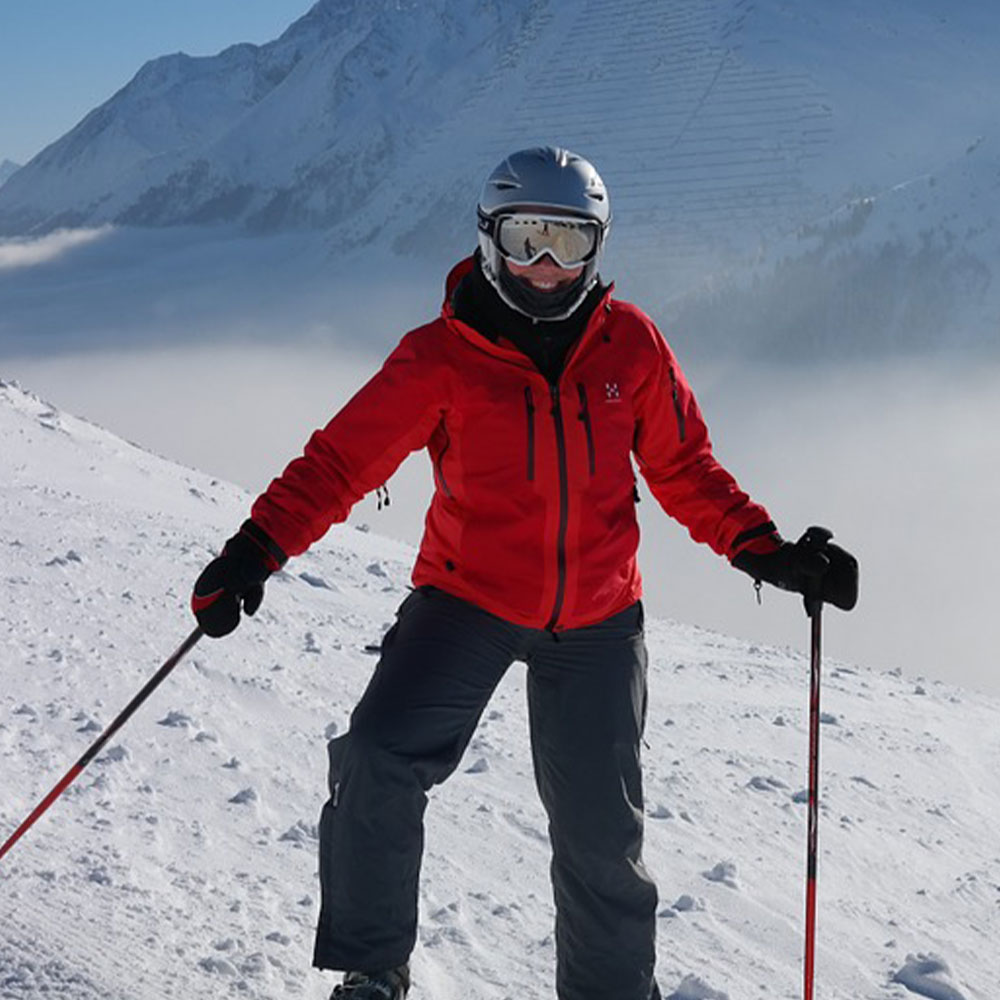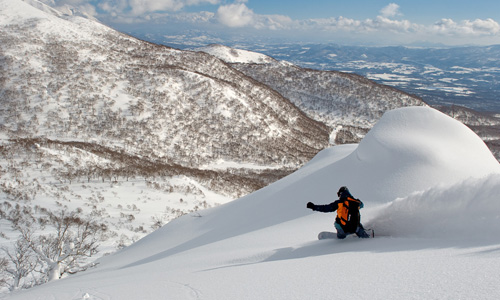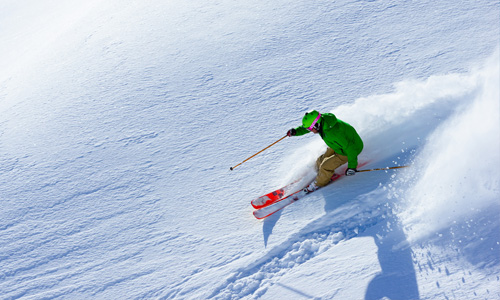The Many Different Types of Snow
Author

A keen runner, skier and nuts about cycling. Karl lives in Cumbria, where he loves encouraging his two children to follow in his outdoor lifestyle. Whilst out and about keeping active, Karl keeps a diary and shares it with Outdoor Look.
 As a keen skier, it is of paramount importance for you to know about different kinds of snow. Understanding the types of snow will help you ski better and also help you handle yourself. Different snow types present different challenges; hence, to become a better skier, you should be able to understand the ways of the snow. Now, if you remember your school science lessons, then you know that snow is precipitation in the form of ice crystals. The form that it takes depends entirely on the temperature and humidity in the environment.
As a keen skier, it is of paramount importance for you to know about different kinds of snow. Understanding the types of snow will help you ski better and also help you handle yourself. Different snow types present different challenges; hence, to become a better skier, you should be able to understand the ways of the snow. Now, if you remember your school science lessons, then you know that snow is precipitation in the form of ice crystals. The form that it takes depends entirely on the temperature and humidity in the environment.
Languages which are used in the more snowy regions of the world tend to develop dozens, or even hundreds of words to describe the various different types and varieties. These words are devised to accurately describe the conditions, and if you know the snow, then you can also interpret the predictions. So, let’s get started with a few popular types of snow.
Powder snow
It’s the sweetest type of snow that has freshly fallen on the mountains. This is extremely light and fluffy and the best that you can get for a good start to your skiing. Floating in the air, you can have the finest experience with some powder all over you. If you want to get technical, you can even break down powder snow into various different subtypes depending on the texture and makeup of the snow.
One subtype of powder snow is known as blower. This snow seems almost like smoke and is light and dry, as a result of extremely cold temperatures. But, you need to have about 30 mm of this snow beneath you, or else you will either be scraping the rocks or blowing up powder in your face. Champagne powder is close to blower, as it is also light and fluffy.
Corduroy
Any surface that is smooth and groomed with soft and squeaky snow is corduroy. The perfectly groomed surface of this smooth, gripping and predictable surface is ideal for skiing and ski touring. The snow having gone through the process of freezing and refreezing is hard in the morning, but gets soft with the sunlight.
 Corn snow
Corn snow
This snow is one of the loveliest snows you can find in a clear spring or in sunny weather. The snow melts during the day with the increasing temperature and then freezes during the night. It stays solid in the morning and softens with the daylight. Its smooth velvety surface gives a better grip, but you have this only for a few hours as the surface gets mushy with passing time.
Crud
Crud is a bit uneven and bumpy as it forms after the powder snow piles up in one place. You can also take it as the next level of the powder, with numerous little lumps of snow. Not so good for skiing, you can probably try to ski on it in the early morning as with the passing of the day, it would get wet and heavy.
Breakable Crust
You get this when the atmosphere is not cold enough to form the corn snow. It is characterized by a mushy surface underneath. It would hold your weight for a little bit of time but then will give away.
In some respects, the choice of which type of snow is best really comes down to personal preference. Powder snow has its benefits but equally comes with drawbacks as well. Whatever the case, it is useful to know some of the different ways in which snow can form, in order to help you enhance your skiing experience.
Author

A keen runner, skier and nuts about cycling. Karl lives in Cumbria, where he loves encouraging his two children to follow in his outdoor lifestyle. Whilst out and about keeping active, Karl keeps a diary and shares it with Outdoor Look.
Categories
- Sport (28)
- Product Reviews (3)
- Team Outdoor Look (7)
- Mike Wild (2)
- Mike Payton (2)
- Suse Hammond-Pears (3)
- Snowboarding (12)
- Latest Offers (105)
- Shop Talk (1)
- Competitions (7)
- Walking (413)
- Lifestyle Fashion (8)
- Travel (86)
- Kit Guides (176)
- Workwear Clothing (6)
- Safety Workwear (4)
- Health/Fitness (289)
- Skiing (91)
- Great Outdoors (1316)
- Cycling (92)
- January 2025
- December 2024
- November 2024
- October 2024
- September 2024
- August 2024
- July 2024
- June 2024
- May 2024
- April 2024
- March 2024
- February 2024
- January 2024
- December 2023
- November 2023
- October 2023
- September 2023
- August 2023
- July 2023
- June 2023
- May 2023
- April 2023
- March 2023
- February 2023
- January 2023
- December 2022
- November 2022
- October 2022
- September 2022
- August 2022
- July 2022
- June 2022
- May 2022
- April 2022
- March 2022
- February 2022
- January 2022
- December 2021
- November 2021
- October 2021
- September 2021
- August 2021
- July 2021
- June 2021
- May 2021
- April 2021
- March 2021
- February 2021
- January 2021
- December 2020
- November 2020
- October 2020
- September 2020
- August 2020
- July 2020
- June 2020
- May 2020
- April 2020
- March 2020
- February 2020
- January 2020
- December 2019
- November 2019
- October 2019
- September 2019
- August 2019
- July 2019
- June 2019
- May 2019
- April 2019
- March 2019
- February 2019
- January 2019
- December 2018
- November 2018
- October 2018
- September 2018
- August 2018
- July 2018
- June 2018
- May 2018
- April 2018
- March 2018
- February 2018
- January 2018
- December 2017
- November 2017
- October 2017
- September 2017
- August 2017
- July 2017
- June 2017
- May 2017
- April 2017
- March 2017
- February 2017
- January 2017
- December 2016
- November 2016
- October 2016
- September 2016
- August 2016
- July 2016
- June 2016
- May 2016
- April 2016
- March 2016
- February 2016
- January 2016
- December 2015
- November 2015
- October 2015
- September 2015
- August 2015
- July 2015
- June 2015
- May 2015
- April 2015
- March 2015
- February 2015
- January 2015
- December 2014
- November 2014
- October 2014
- September 2014
- August 2014
- July 2014
- June 2014
- May 2014
- April 2014
- March 2014
- February 2014
- January 2014
- December 2013
- November 2013
- October 2013
- September 2013
- August 2013
- July 2013
- June 2013
- May 2013
- April 2013
- March 2013
- February 2013
- January 2013
- December 2012
- November 2012
- October 2012
- September 2012
- August 2012
- July 2012
- June 2012
- May 2012
- April 2012
- March 2012
- February 2012
- January 2012
- December 2011
- November 2011
- October 2011
- September 2011
- August 2011
- May 2010
- April 2010
- March 2010
- February 2010
- January 2010
- November 2009
- October 2009
- September 2009
Submit a Comment